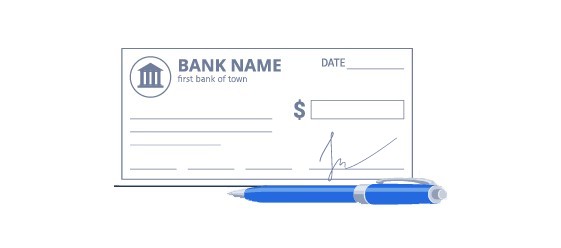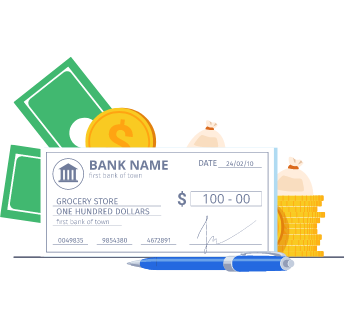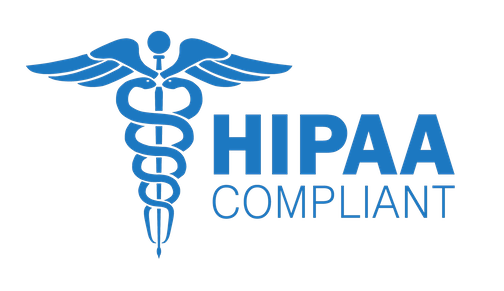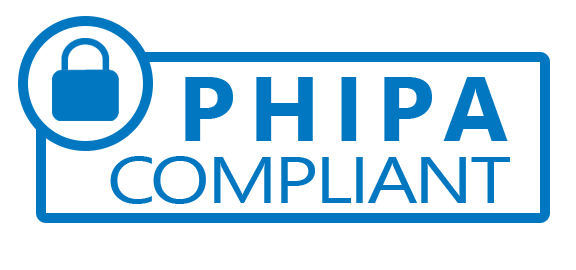
Is Routing Number Same As Transit Number? And Why Does It Matter For Your Business?
We all use Google Maps to find the best route in and around the city we live in, and Google always manages to find a route to get you there. Did you know that your business cheques also have a routing like Google? You probably already know about cheque routing and transit numbers. Have you ever wondered if the routing number is the same as the transit number?

If you are unsure about the answer, it is high time you learned it. Here we will discuss the Canadian bank routing number and how it can impact your business transaction.
What Is a Routing Number?
Routing numbers are numerical digits or codes that represent the branch location of a specific financial institution. You may also know it by the Canadian cheque routing number or ABA (American Bankers Association) routing number.
As the name implies, the routing number helps you route the transaction from and to a bank account in an efficient way. You can find the routing number for cheque payments and electronic fund transfers, or EFT. Generally, the Canadian bank routing number has 8 to 9 digits.
Understanding The Canadian Bank Routing Number
If you take a closer look at the anatomy of the routing numbers, you can notice a couple of things about it. For instance, the Canadian bank routing number always has a leading zero, “0.” Here is something you probably didn’t know about this leading zero, which is there for a reason.
In the US, the routing number has a nine-digit format. Hence, the first zero of the Canadian bank routing number ensures it can reach nine digits. But we are just starting to scratch the surface here. There is much more to the routing numbers than we discussed so far.
Every routing number consists of two parts, and this is where it starts to get interesting. Every Canadian bank routing number consists of the following.
- A 5-digit branch or transit number
- A 3-digit institution number
Branch or Transit Number
The branch or transit number reveals the branch location associated with the bank account. In other words, the branch number within the Canadian cheque routing number shows the branch where an account holder opens/maintains their bank account. It is a 5-digit number, and you can find it on bank cheques. You can find the same transit number on your business cheques.
Institution Number
As we mentioned, the branch or transit number takes up five digits of the Canadian cheque routing number. On the other hand, the institution number only takes three digits of the routing number. You can use the transit number to find the branch to which the bank account belongs. Similarly, you can use the institution number to identify the account holder’s bank.
Routing number vs. Transit number vs. Account number
Many often wonder, “is routing number same as transit number?” because you often hear the two terms interchangeably. But are they the same? Strictly speaking, the routing and transit numbers are not the same.
The Canadian bank routing number combines an account’s transit and institution numbers. So while the routing number contains the branch or transit number, they are hardly the same. Once you have the transit number, you can paste it on a search engine like Google, showing you the branch location.
Now, if you are worried about how you can find the transit number of an account, you can look at the bottom of the cheque. Another hot topic, like routing number vs. transit number, is the account number and its role in the routing number.
An account number usually has seven to twelve digits, which is unique for each account. And both routing and account numbers are essential for completing any automatic payments. Business communication often uses the terms transit and routing numbers. When you come across these terms in your business communications, you may find yourself wondering, “Is a transit number the same as a routing number?”
 Also Read: What is Positive Pay?
Also Read: What is Positive Pay?When Can You Use Your Routing Number?
Now that you know what a Canadian bank routing number is, let’s see how you can use it for your business. The most common routing number application is when a person goes and applies for life insurance.
It typically involves someone providing details like the routing and account number and completing a PAD pre-authorized debit, and a PAC pre-authorized cheque from the insurance provider. You should also note that PACs and PADs are processes that involve automated fund transfers of AFTs.
Here, they use the Canadian bank routing number to accurately identify the bank account from which they can withdraw the money.
 Also Read: Difference Banks Drafts Vs Certified Cheques
Also Read: Difference Banks Drafts Vs Certified ChequesHow To Find The Canadian Cheque Routing Number?
As we discussed earlier, you can find the Canadian cheque routing number at the bottom of the cheque. So, chances are you see the routing number of various bank accounts without ever realizing that you are looking at it.
We are talking about the numbers at the bottom of every cheque. Unlike what some of you may think, these numbers are not just random digits. These numbers at the bottom of the cheque with a different font, reveal the Canadian cheque routing number and other essential details.
Furthermore, the Canadian cheque routing number can be split into different parts to reveal the institution and branch numbers. So, in the end, you can get the following details from a bank cheque.
- Cheque number
- Branch or transit number
- Financial institution number
- Account number
You probably didn’t think a bunch of numbers at the bottom of a cheque could reveal many details. But, if you still have trouble understanding which number they are, learning the bank’s institution number can help.
Knowing which part of the Canadian cheque routing number is the institution number makes it easier for you to find the transit number. Here is a quick guide on how to read the Canadian cheque number.
The cheque number typically comes in four groups of numbers, which includes the four numbers on the list above. Starting from the left, the first set of numbers typically has three digits, which is the cheque number. The second and third set of numbers shows the Canadian cheque routing number, which you can split into two.
In the routing number, the first five digits highlight the branch or transit number. Again, that should answer your question, “Is the routing number the same as the transit number?” The remaining set of (3-digit) numbers shows the institution number for identifying your bank.
Finally, we have a set of 7 numbers, which reveals the account number to which the cheque belongs. And that’s all you need to know to find the Canadian cheque routing number from your business cheques.
How To Find The Canadian Bank Routing Number Without A Cheque?
As you saw above, it is relatively easy to find the Canadian bank routing number using a cheque. But what happens when you don’t have one? Or how would you find the routing number without a physical cheque?
Online banking is the best way to find the Canadian bank routing number without a physical cheque. With online banking, you can access a void cheque or the forms for direct deposit, from where you can find the routing number.
It is also possible that some banks have the routing number directly under account details. Moreover, the standard steps for finding the Canadian bank routing number are not so different for different banks.
It generally requires the account holder to sign in to their online banking account and go to the accounts section. Once the account holder reaches the account section, they can either view the Canadian bank routing number from account details or via a void cheque.
How To Find The Canadian Bank Routing Number Using Bank Address?
Of course, there is a third way to find the Canadian bank routing number using nothing but the bank address. Here, all you need is the branch address of the bank. Then you can look up the same on the internet. Besides that, you can also find PDF files online which lists the routing number for all major bank branches in the country.
How To Find The Transit, Account, And Institution Numbers?
The above sections discussed how to read the numbers at the bottom of a cheque. We also saw how you could find the Canadian cheque routing number. We also saw you can find the transit and institution numbers. But the cheques and their appearance can change from one bank to another.
In other words, all bank cheques are not the same. The digits or symbols at the bottom of a bank cheque can vary depending on the bank. Sometimes cheques may not have any separation between the numbers. In such cases, it is more difficult to segregate the Canadian bank routing number from the bottom of the cheque.
Take Scotiabank’s cheques, for example. In their cheques, you can find that the institution number comes right after the first three digits or the cheque number. Additionally, Scotiabank splits the account number into two sets using routing symbols. In such cases, you may find it more complex to determine the Canadian cheque routing number.
 Also Read: How to read a Canadian Cheque – MICR
Also Read: How to read a Canadian Cheque – MICRHow To Find The Institution Number?
Perhaps, the most accessible element to find in a cheque is its institution number. Unlike the whole Canadian cheque routing number, you don’t need a cheque or online banking to see the institution number.
You can find it with a straightforward Google search. However, we list institution numbers below for some of Canada’s prominent banks to make things even more accessible.
| Institution Number | Bank/Financial |
| 001 | BMO or Bank of Montreal |
| 002 | Scotiabank |
| 003 | RBC or Royal Bank of Canada |
| 004 | TD or Toronto-Dominion Canada Trust |
| 006 | NBC or National Bank of Canada |
| 010 | CIBC or Canadian Imperial Bank of Commerce |
| 016 | HSBC |
Why Do You Need Top-Quality Cheque Printing Services For Your Business?
At this point, you know that a regular business cheque contains so much critical information. While you may have questions like “Is routing number the same as transit number?” many business organizations already know the answer.
It is also possible to use information like the Canadian bank routing number from the cheques they receive. Hence, you must print accurate information on your business cheques because any error or misprint could affect your business payments.
You can’t deny the possibility that your customers or partners use the details from your cheques to make payments to you. A business cheque contains all types of information, such as
- Canadian cheque routing number
- Branch or transit number
- Financial institution number
- Account number
Therefore, it would be a mistake to get careless with your cheque printing and mailing process. Any error in your business’s cheque transaction could hinder your business processes. Worst case scenario, it could jeopardize your relationship with your long-term customers and partners.
Automated Cheque Printing
The best way to print business cheques for your organization using an automated solution like PostGrid. Advanced automation ensures that your business cheques are always correct, including everything from the Canadian bank routing to the account number.
Hence, it is advisable to use a direct mail automation software like PostGrid to take care of your cheque printing and mailing needs. It is also worth noting that PostGrid is not just ideal for printing crisp and clear routing numbers Canadian cheques. You can use PostGrid’s advanced features for all your printing needs, including direct mail marketing and bulk mailing.
 Also Read: Canada Post Neighbourhood Mail
Also Read: Canada Post Neighbourhood Mail









